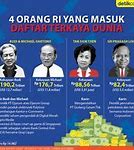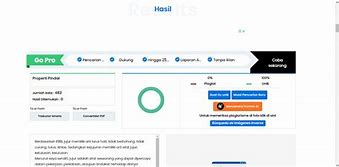Visa Visitor Adalah Visa Apa Sih Indonesia

Lý do khiến bạn bị từ visa visitor Canada là gì?
Vì sao bạn lại bị từ chối cấp Visa visitor Canada?
Địa chỉ nào ở Việt Nam nhận hồ sơ xin Visa visitor Canada?
Địa chỉ tiếp nhận đăng ký Visa visitor Canada tại Việt Nam
Hiện nay có 2 cách để bạn nộp hồ sơ xin Visa visitor đó là trực tiếp hoặc nộp qua hình thức online. Nhưng dù nộp trực tiếp hay online thì bạn đều phải lấy dấu sinh trắc tại trung tâm tiếp nhận hồ sơ xin thị thực (CVAC).
Hiện tại ở Việt Nam có các trung tâm tiếp nhận hồ sơ xin thị thực du lịch Canada ở 2 thành phố lớn tại Hà Nội và Hồ Chí Minh.
Country-Specific Visa Information
Even though visa regulations are quite different from one country to another, they are administered in a common way. Let's give some examples to illustrate the differences between tourist and visit visa policies around the world.
Schengen Visa: This visa is meant for tourism and short stays mainly
Duration: A maximum of 90 days within a 180-day period
Comprises 26 European countries
B1 Visa: For business visits
B2 Visa: For tourism and medical treatment
Duration: Usually, it's for a period of up to 6 months. Nevertheless, if the need arises, it can be extended.
Keep in mind that visa policies can shift. So, always make sure to find the most recent data from the embassy or the consulate of the country where you are going.
Pro tip: Visa-free agreements are offered to people from some countries. First, make sure that you are not among the exempted nationals before getting a visa!
Lệ phí xin Visa visitor Canada là bao nhiêu?
Lệ phí cấp Visa visitor Canada là bao nhiêu?
Lệ phí luôn là vấn đề mà mọi người quan tâm trước khi xin cấp Visa visitor Canada. Vậy quy định về lệ phí Visa visitor Canada là gì và các khoản phí cần chuẩn bị gồm những gì?
Để được cấp Visa visitor Canada bạn cần chuẩn bị những khoản phí sau:
Như vậy tổng chi phí để xin Visa visitor Canada bạn sẽ cần chuẩn bị khoảng 4.000.000 VNĐ/ người. Nhưng nếu bạn sử dụng một số dịch vụ khác tại Trung tâm tiếp nhận hồ sơ xin thị thực sẽ cần nộp thêm một vài khoản phí sau:
Depending on the type of visa you have been issued, you may be eligible to extend your stay in Papua New Guinea without leaving the country.
The eligibility requirements for a visa extension will vary depending on your personal circumstances, which include the purpose and the period of time you have already spent in Papua New Guinea, and length of the extension sought.
For further information regarding visa extensions, please contact ICA.
Entering the United States
A visa allows a foreign citizen to travel to a U.S. port-of-entry (generally an airport) and request permission to enter the United States. A visa does not guarantee entry into the United States. The Department of Homeland Security (DHS), U.S. Customs and Border Protection (CBP) officials at the port-of-entry have authority to permit or deny admission to the United States. If you are allowed to enter the United States, the CBP official will provide an admission stamp or a paper Form I-94, Arrival/Departure Record. Learn more about admissions and entry requirements, restrictions about bringing food, agricultural products, and other restricted/prohibited goods, and more by reviewing the CBP website.
See Extend Your Stay on the U.S. Citizenship and Immigration Services (USCIS) website to learn about requesting to extend your stay beyond the date indicated on your admission stamp or paper Form I-94.
Failure to depart the United States on time will result in being out of status. Under U.S. law, visas of individuals who are out of status are automatically voided (Section 222(g) of the Immigration and Nationality Act). Any multiple entry visa that was voided due to being out of status will not be valid for future entries into the United States.
Failure to depart the United States on time may also result in you being ineligible for visas in the future. Review Visa Denials and Ineligibilities and Waivers: Laws to learn more.
If your plans change while in the United States (for example, you marry a U.S. citizen or receive an offer of employment), you may be able to request a change in your nonimmigrant status to another category through U.S. Citizenship and Immigration Services (USCIS). See Change My Nonimmigrant Status on the USCIS website to learn more.
While you are in the United States, receiving a change of status from USCIS does not require you to apply for a new visa. However, once you depart the United States you must apply for a new visa at a U.S. Embassy or Consulate in the appropriate category for your travel.
Difference Between Tourist Visas and Visitor Visas Based on Purpose of Visit
Let's break down the key differences of these visas:
Covers a wider range of purposes:
For example, you would require a visit visa if you are going to attend a business conference in London and, at the same time, a family gathering there.
There are a few differences between a tourist visa and a visitor visa. Here’s a table highlighting the key difference between a tourist visa and a visitor visa:
Primarily for travel, tourism and entertainment purposes only
It has a broader purpose and includes visiting family and friends or for business purposes
Typically shorter, usually for a few weeks to a few months.
It can vary widely. Depending on the purpose of the visit, it might be similar to a tourist visa or longer.
Sightseeing, leisure, and attending cultural events.
This includes tourism, visiting family or friends, business meetings, and conferences.
No work allowed during travel time.
Usually, no work is allowed, but business-related activities may be permitted under specific conditions.
Application Requirements
Often requires proof of travel itinerary, accommodation, and financial funds.
It may require additional documentation like an invitation letter, proof of relationship (if visiting family), or business-related documents.
Typically issued to individuals travelling for tourism purposes.
Issued to individuals visiting for various reasons, such as tourism, family visits, or business.
Many countries issue tourist visas, including the Schengen Area, the USA, and Australia.
Common in countries like Canada (Visitor Visa), the USA (B-2 Visa for visitors), etc.
It's less flexible as it’s strictly for tourism and travel.
It is more flexible and covers a wider range of purposes for visits.
Note: These are the major key differences between a tourist visa and a visitor visa, according to our team members' latest research. It might have some minor changes depending on the country.
Also Read: Difference Between Single Entry and Double Entry Visas
Hiểu sai về các yêu cầu xin visa visitor Canada
Những năm gần đây tỷ lệ từ chối cấp visa visitor Canada đang có xu hướng tăng. Bởi khi xét duyệt chính phủ Canada xem xét rất kỹ về vấn đề công dân quốc gia đó có quay trở lại đất nước của họ hay không? Hay họ sẽ cư trú quá thời hạn tại Canada?…
Permissible Activities Under Tourist Visa and Visitor Visa
Being clear about what is legal and what is not legal under each type of visa is essential. It's the same as knowing the rules of a game before you play:
Bước 6: Thanh toán chi phí
Sau khi hoàn tất việc nộp hồ sơ bạn cần thanh toán toàn bộ khoản phí xin thị thực. Bên cạnh đó bạn cũng cần phải thanh toán phí của Chính phủ Canada và sinh trắc học.
Sau khi có quyết định đối với hồ sơ xin thị thực, bạn có thể nhận lại hồ sơ từ trung tâm hay bạn có thể đăng ký gửi hồ sơ về tận nhà theo đường bưu điện. Nhưng để nhận được kết quả hồ sơ thông qua việc gửi bưu điện bạn cần mang theo các loại giấy tờ sau:
Ngoài ra bạn có thể ủy quyền để người khác nhận kết quả thay mình, nhưng khi nhận kết quả người ủy quyền cần mang theo các loại giấy tờ sau:
Một điều mọi người cần hết sức lưu ý khi nhận kết quả là cần kiểm tra thông tin chi tiết trên thị thực được cấp. Để đảm bảo rằng thị thực này còn hiệu lực cho đến ngày dự định nhập cảnh vào Canada mà tránh gặp những sự cố khác.



